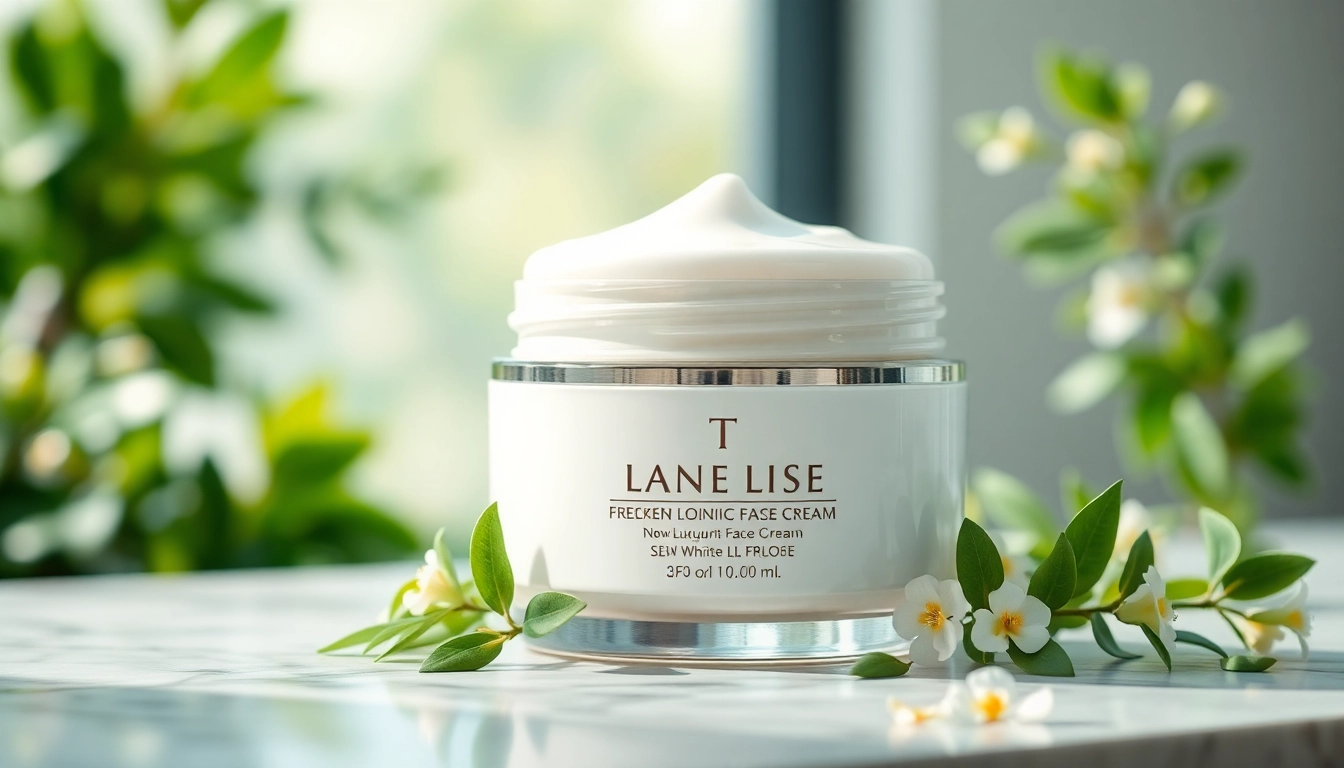Understanding Different Skin Types and Their Needs
When it comes to skincare, recognizing your skin type is paramount for choosing the right products. Each type has its unique set of characteristics and requires tailored care to maintain health and radiance. Knowing your skin type helps in selecting the best face cream that will address specific concerns.
Identifying Your Skin Type
Your skin type can generally be categorized into five main types: normal, oily, dry, combination, and sensitive. Understanding these categories can empower you to make informed decisions about your skincare regimen.
- Normal Skin: Typically well-balanced, normal skin has a smooth texture and hardly any blemishes.
- Oily Skin: Characterized by excess sebum, oily skin often shines, especially in the T-zone, and is prone to acne and enlarged pores.
- Dry Skin: This type feels tight and may show signs of flakiness. It often requires additional hydration and moisture.
- Combination Skin: A mix of oily and dry areas, this skin type may experience dryness on the cheeks and oiliness on the forehead and nose.
- Sensitive Skin: Prone to allergic reactions and irritations, sensitive skin may feel itchy, burning, or sting on exposure to certain products.
Common Skin Concerns and Solutions
Each skin type comes with its set of common concerns. For instance, oily skin typically grapples with acne and shine, while dry skin may face issues with flakiness and irritation. To combat these concerns:
- Oily skin can benefit from lightweight, non-comedogenic face cream to control shine without clogging pores.
- Dry skin requires richer, hydrating formulations that lock in moisture.
- Combination skin may necessitate a dual-action cream to suit both dry and oily areas.
- Sensitive skin should steer clear of harsh ingredients and opt for soothing, fragrance-free products.
How Face Cream Can Help
A good face cream plays a crucial role in your skincare routine. It not only hydrates but also helps to improve skin texture, reduce the appearance of fine lines, and protect against environmental damage. The right formulation can restore balance, minimize breakouts, and support overall skin health.
The Importance of Ingredients in Face Cream
Understanding the ingredients in your face cream is critical to achieving the desired results. Some ingredients offer specific benefits, while others might trigger allergies or exacerbate issues.
Key Ingredients to Look For
Certain ingredients are universally recognized for their benefits:
- Hyaluronic Acid: A powerful humectant that draws moisture into the skin, making it ideal for dry skin types.
- Niacinamide: Known for its anti-inflammatory properties, niacinamide can help reduce redness and improve skin elasticity.
- Retinoids: These derivatives of Vitamin A promote cell turnover and reduce fine lines and pigmentation.
- Peptides: Short chains of amino acids that help to stimulate collagen production and improve skin texture.
Ingredients to Avoid
Not all ingredients are beneficial; some conventional additives can be detrimental to your skin’s health. Avoid:
- Alcohol: Often used as a preservative, alcohol can strip the skin of its natural oils, leading to dryness and irritability.
- Fragrance: Synthetic fragrances can cause allergic reactions and irritations, especially in sensitive skin.
- Parabens: These preservatives can disrupt hormonal balance and have come under scrutiny for potential health risks.
Understanding Labels and Claims
Deciphering product labels can be perplexing. Terms like “non-comedogenic,” “hypoallergenic,” and “dermatologist-tested” carry varying meanings across brands. It’s essential to understand these claims and check for independent reviews or science backing the product’s effectiveness.
Choosing the Right Face Cream for Various Conditions
With numerous options available, knowing how to choose face cream based on your specific conditions can help streamline your skincare journey. Each skin type benefits from tailored formulations.
Best Face Creams for Dry Skin
For dry skin, look for creams that offer intense hydration:
- Creams with Shea Butter: Rich in vitamins and fatty acids, shea butter provides deep nourishment.
- Hydrating Oils: Products infused with oils like almond and jojoba can help lock in moisture.
- Glycerin-based Formulations: These attract moisture from the air, helping to keep skin hydrated.
Top Picks for Oily Skin
Oily skin requires a different approach:
- Gel-based Creams: Lightweight and fast-absorbing, gel formulations prevent excess shine and avoid clogging pores.
- Salicylic Acid: Often included in formulations for oily skin, this ingredient helps to control breakouts.
- Oil-free Products: Opt for creams specifically labeled oil-free to minimize the appearance of shine.
Recommendations for Sensitive Skin
For sensitive skin, it’s crucial to select gentle formulations:
- Fragrance-free Creams: Avoid any scent that could cause irritation.
- Soothing Ingredients: Look for products containing aloe vera, chamomile, or calendula.
- Patch Tests: Always conduct patch tests to rule out adverse reactions before applying a new product all over your face.
Application Techniques for Maximum Effectiveness
The effectiveness of your face cream is also contingent on how you apply it. Proper techniques can enhance absorption and reduce wastage.
Prepping Your Skin
Before applying face cream, ensure that your skin is clean. Washing with a gentle cleanser removes dirt and allows for better absorption of active ingredients.
How to Apply Face Cream Correctly
Here are some steps to maximize the benefits of your face cream:
- Take a small amount of cream onto your fingertips.
- Start at the center of your face and work outwards to ensure even distribution.
- Use gentle, upward motions to massage the cream into your skin.
- Don’t forget to apply to your neck and décolleté, as these areas also need hydration.
Frequency and Timing of Application
For optimal results, incorporate your face cream into both your morning and night routines. In the morning, apply after cleansing and before sunscreen, while in the evening, it should be applied after your serums for deeper penetration during your skin’s natural overnight repair process.
Evaluating the Performance of Your Face Cream
Once you’ve chosen a face cream, it’s important to evaluate its effectiveness over time. This involves observing how your skin responds to the product.
Signs Your Face Cream is Working
As you observe changes, there are several indicators that your face cream is having a positive effect:
- Improved Hydration: Skin feels softer and more supple.
- Reduced Breakouts: Fewer blemishes or a decrease in associated redness.
- Visible Texture Changes: Smoother appearance or diminished fine lines.
When to Switch Products
If you notice negative reactions (e.g., redness, itching, breakouts), it may be time to reconsider your choice. Additionally, if your skin’s needs change seasonally or due to hormonal changes, be prepared to adapt your skincare routine accordingly.
Tracking Your Skin’s Progress
Keep a skincare journal to track how your skin reacts to different products over time. Note down changes, both positive and negative, to facilitate better decision-making when it comes to future skincare purchases.

